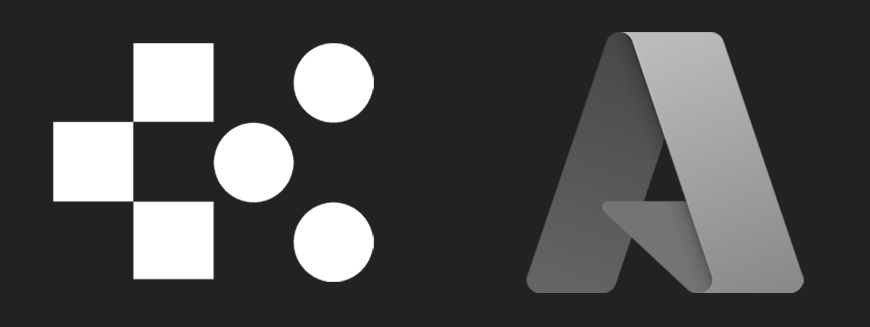How to Manage Change During Azure App Modernization
Explore effective strategies for managing change during Azure app modernization, focusing on technology, training, and stakeholder engagement.

Modernising apps with Azure is more than just a technical upgrade - it's about managing both the systems and the people involved. Without proper planning, businesses risk disruptions, employee resistance, and rising costs. Here's a quick breakdown of what you need to know:
-
What is Azure App Modernisation?
Moving from outdated systems to Azure's cloud platform for better performance, flexibility, and cost efficiency. This includes migrating apps, updating code, and reworking data structures. -
Why Change Management Matters:
Beyond technology, managing operational and human factors is key. A solid plan reduces disruptions, controls costs, and ensures team alignment. -
Key Steps to Success:
- Evaluate current systems to identify challenges.
- Set clear goals with phased timelines (short-, medium-, long-term).
- Engage stakeholders early and assign clear roles.
- Use Azure tools like the Well-Architected Framework for best practices.
- Train teams with role-specific Azure skills.
-
Cost and Risk Management:
Use Azure's cost-saving features (e.g., Reserved Instances, Savings Plans) and monitoring tools to track progress and expenses. Regularly adjust plans based on data insights.
Modernisation isn't just about technology - it's about preparing your team to work effectively with those changes. With the right approach, you can upgrade without losing momentum.
Learn Live - Choosing Your Application Modernization Approach in Azure
Creating a Change Management Plan for Modernisation
Building a strong change management plan for Azure app modernisation means finding the right balance between technical requirements and organisational readiness. For UK small and medium-sized businesses (SMBs), this involves tackling both the technical challenges of cloud migration and the human factors that can make or break the project's success.
Main Steps in Change Management
The first step in effective change management is evaluating your current state. This involves reviewing your existing applications to identify legacy components, dependencies, and potential migration hurdles. A thorough understanding of where you’re starting from helps set realistic timelines and ensures you allocate resources wisely.
Strategic planning and prioritisation are critical to getting the most out of your investment in modernisation. A well-thought-out business plan should include a clear explanation of why modernisation is necessary, a detailed cost–benefit analysis to justify the effort, and a phased implementation plan that minimises disruptions to daily operations.
Structuring a timeline is another essential step. Break your goals into short-, medium-, and long-term milestones (e.g., 0–6 months, 6–18 months, and 18–36 months) to ensure a smooth, phased transition while keeping your business running.
Establishing governance frameworks is key to managing resources effectively and staying compliant throughout the modernisation process. For instance, creating a Centre of Excellence can help reduce risks, improve quality, and speed up time to market.
Engaging your stakeholders is crucial from the start. Keeping decision-makers and key players informed and involved ensures they stay aligned with the project’s goals. This might include creating a strong case for change to secure leadership support or appointing Azure champions within your organisation to encourage internal buy-in.
Finally, monitoring progress continuously is essential. Keeping an eye on key metrics allows you to make adjustments as needed and address potential issues before they escalate.
Using Azure Best Practices
The Azure Well-Architected Framework is a cornerstone for ensuring a successful modernisation process. Its five pillars - reliability, security, cost optimisation, operational excellence, and performance efficiency - provide clear guidance for making solid architectural decisions that will stand the test of time.
"Azure application modernisation is a strategic approach that transforms legacy systems into a cloud-centric framework. The primary objective is to boost operational efficiency, flexibility, and scalability by leveraging the Azure platform." – C-Metric
Azure offers assessment and planning tools to help you make informed decisions about how to modernise your applications. Whether you’re considering rehosting, replatforming, refactoring, rearchitecting, rebuilding, or replacing your apps, these tools provide a strong foundation for your strategy.
DevOps integration is another game-changer, automating processes like building, testing, and deploying applications. This reduces manual errors and speeds up the deployment of modernised apps through CI/CD practices.
Managing costs effectively is also a top priority. Azure’s pay-as-you-use model helps control expenses while providing access to advanced capabilities. You can use frameworks like FinOps to budget strategically and make the most of your funds during the modernisation process. For more tips on managing Azure costs, check out Azure Optimization Tips, Costs & Best Practices.
The Azure Migration and Modernisation Programme and the Cloud Adoption Framework for Azure offer tried-and-tested methodologies to guide you through the process.
To manage risks, adopt a phased approach. Techniques like T-shirt sizing can help estimate project complexity, allowing you to set realistic expectations for timelines and resources. This phased method not only reduces risks but also enables teams to learn from earlier stages and refine their approach for later phases.
Communication and Stakeholder Engagement
Clear communication is the backbone of any successful Azure app modernisation project. It builds on your change management plan, ensuring smooth transitions and alignment among all stakeholders. Without consistent and transparent dialogue, even the most technically sound migration can stumble due to unmet expectations or unresolved concerns. For UK SMBs, setting up strong communication channels from the very start can help avoid delays and keep everyone focused on achieving the project's objectives.
Communication Methods That Work
From day one, establish a communication plan that keeps stakeholders informed throughout the migration process. Regular updates and clear channels help manage expectations and address issues as they arise.
- Regular Status Updates: Weekly progress reports work well for busy executives. These should highlight completed milestones, upcoming tasks, challenges faced, and any adjustments to timelines.
- Centralised Documentation: Keep all project-related information - like timelines, roles, specifications, and FAQs - in one easily accessible location.
- Feedback Channels: Use a mix of tools such as dedicated emails, scheduled meetings, and anonymous forms to gather and address concerns promptly.
- Azure Communication Services: Leverage tools like live chat, video calls, and voice consultations for real-time updates and quick resolution of queries. Ensure that project documentation includes instructions for these tools and prepare support channels to handle related questions.
Good communication not only keeps the project on track but also encourages early stakeholder involvement, which is explored further in the next section.
Getting Key Stakeholders Involved Early
Involving stakeholders early in the process can significantly reduce resistance and prevent costly delays. This approach strengthens your change management plan by clarifying responsibilities and setting expectations from the outset.
- Identify Stakeholders: Before any technical work begins, map out all relevant stakeholders. This includes application owners, solution architects, business representatives, and experts in regulatory and security matters. Each group offers valuable insights that can shape the modernisation strategy.
- Prioritise Communication: Tailor your updates based on stakeholder roles. Senior executives may prefer high-level summaries, while technical teams might need detailed, granular information.
- Define Roles with a RACI Matrix: Use a Responsibility Assignment Matrix (RACI) to outline each stakeholder's role. This ensures clear decision-making authority and accountability across the project.
- Collaborate with Application Owners: Work closely with those who know the existing systems inside out. Their input can help avoid errors and uncover opportunities for improvement.
Continuous engagement with stakeholders builds trust and encourages collaboration. This leads to smoother implementation, better user adoption, and stronger business outcomes. Clearly explain how the modernised Azure environment will improve both personal and professional aspects of their work - whether it’s through increased efficiency, enhanced security, or simplified processes. By setting realistic goals and listening actively, you can address concerns and maintain trust, even when challenges arise.
Training Teams for Azure Tools and Methods
After establishing clear communication and engaging stakeholders, it's crucial to equip your teams with the Azure skills they need to succeed. This training is just as important as the technical planning itself when it comes to gaining the full benefits of Azure app modernisation. A well-trained team is better prepared to manage change effectively throughout the process.
Role-Based Training Programmes
Not every team member has the same responsibilities, so training should be tailored to their specific roles. Azure offers role-based learning paths and certifications - like AZ-900, AZ-104, and AZ-204 - that help validate and build relevant skills.
For instance, developers can gain from hands-on training in Azure development tools and cloud-native application design. IT Operations teams, on the other hand, benefit from training focused on managing and securing Azure environments. Support staff can focus on courses that prepare them to handle common issues effectively.
"Foster a growth mindset and build cloud skills to maximise impact across your entire org - from individual career advancement to improved business outcomes." - Microsoft Azure
Small and medium-sized businesses (SMBs) should also aim to create a learning-focused culture, which can amplify the impact of Azure across their organisation.
Making Training Easy to Access
Good training should be accessible to everyone. Microsoft has successfully reached 2.7 million learners through its accessible training initiatives, achieving a 97% employee completion rate.
Flexibility is key for busy teams. Azure Virtual Training Days provide free, instructor-led sessions on core Azure topics. For those unable to attend live sessions, Microsoft Learn offers self-paced modules with interactive demos and labs.
Personalised learning paths allow team members to focus on skills that matter most to their roles. Additionally, internal knowledge-sharing sessions, whether formal or informal, can help reinforce new concepts and boost team confidence.
Accessibility is another important factor. Microsoft products come with built-in accessibility features to support diverse learning needs. Sharing materials ahead of time, recording sessions for later review, and using tools like PowerPoint Live for real-time captions and translations can further enhance the learning experience.
A standout example is Microsoft's collaboration with the Department of Work and Pensions in the UK. This partnership delivered tailored training to 26,000 work coaches, showing how large-scale training can be effectively implemented for diverse teams.
"Accessibility training has given [employees] access to tools they didn't know existed, which makes their day in the office, their day at work so much more fruitful." - Rich Corbridge, Chief Digital Officer for the Department of Work and Pensions
Practical Application and Progress Tracking
To make learning stick, include hands-on exercises and real-world projects.
Tracking progress is equally important. Learning management systems can monitor completion rates and assessment scores, helping to identify knowledge gaps. Regular check-ins can also highlight areas where additional support might be needed.
Training isn’t a one-off activity; it’s an ongoing effort that aligns with your modernisation goals. As Azure services continue to evolve, offering continuous learning opportunities will help your teams stay effective and up-to-date.
Tracking Progress and Using Feedback
Monitoring progress isn’t just about ticking off tasks - it’s about digging into the details of your modernisation journey and making smart adjustments as you go. This ongoing tracking plays a crucial role in every stage of your modernisation plan, tying back to the earlier focus on continuous monitoring outlined in your change management strategy.
Using Azure Analytics for Tracking
Azure offers a range of tools that make it easier for SMBs to keep tabs on their modernisation efforts. Azure Monitor acts as a central hub, tracking everything from infrastructure performance to user adoption. By analysing metrics and logs across your Azure setup, it helps you understand what’s working and what needs attention. Custom dashboards provide a clear picture of your infrastructure, applications, and networks, making it easier to spot trends and potential issues.
The numbers speak for themselves: users report a 615% three-year ROI, 9% lower costs, a 30-minute reduction in incident detection, and a 40% decrease in IT expenses.
Another helpful tool is Azure Data Explorer, which offers near real-time analytics. It’s perfect for analysing large data sets as your modernisation progresses. Setting up alerts is equally important - Azure Monitor can flag anomalies and even trigger automated responses to prevent problems before they affect users. Meanwhile, Azure’s Change Tracking & Inventory service keeps a detailed record of changes across your environment, from file updates to software installations, providing a comprehensive audit trail.
Take the example of Transport for Greater Manchester. Jason Higgins, their Lead Infrastructure Engineer, explained how Azure’s tools transformed their operations:
"We're solving problems before they're known to end users. That's a depth to our alerting capabilities we didn't have before."
Adjusting Plans Based on Data
Data is the backbone of effective change management. By setting up strong feedback loops, you can act quickly on insights gathered during your modernisation, ensuring your strategy stays on track.
Collaboration across departments is key here. Bringing together IT, operations, finance, and end-user teams gives you a well-rounded view of how changes are impacting the organisation. Shorter, iterative cycles allow you to adapt quickly to feedback, making adjustments in real time.
Microsoft’s own experience highlights this approach. Sachin Rao, Principal Software Engineer at Microsoft, shared:
"With Azure Monitor, everything is automatically managed, so we can simply focus on doing our jobs."
Regular check-ins with stakeholders ensure your modernisation efforts align with business goals. Tools like Azure Monitor provide the data needed for meaningful discussions about progress and priorities. For SMBs operating in hybrid environments, Azure Monitor offers a unified view that integrates Azure with other cloud platforms, making it easier to track the overall impact of your efforts. Cost management is another important factor - Azure Monitor’s capacity reservation tiers can save up to 36% compared to pay-as-you-go pricing.
For more ideas on cutting costs and getting the most out of your Azure setup, check out Azure Optimization Tips, Costs & Best Practices.
Use these tools and insights to fine-tune your strategy and ensure a smooth transition to Azure.
Adding Cost Control and Best Practices
Balancing performance and cost efficiency is key to successful change management. Instead of treating cost optimisation as a one-off task, it should be an ongoing effort. This ensures that modernisation initiatives deliver the best return on investment while maintaining top-notch operational standards.
Cost-Saving Methods with Azure
Azure provides several tools and strategies to help organisations control costs during modernisation. For predictable workloads, Reserved Instances can cut costs by up to 72% compared to pay-as-you-go pricing. For workloads with fluctuating demands, Azure Savings Plans offer up to 65% savings with added flexibility across various compute services.
Short-term measures can reduce costs by 10%, but sustained optimisation efforts may lower expenses by over 20%. Many organisations focus solely on virtual machine optimisation, often missing out on additional savings. In fact, poor management of databases and storage tiers could leave 40% to 60% of potential savings untapped.
To monitor and manage spending, Azure Cost Management + Billing provides a suite of tools at no extra cost. These tools allow for detailed cost analysis, budgeting, alerts, and allocation. When paired with Azure Advisor, which evaluates usage patterns and suggests improvements, businesses can identify rightsizing opportunities and further streamline resource usage.
Storage optimisation is another critical area. Azure offers different storage tiers to suit various access needs, each with its own cost benefits:
| Storage Tier | Best For | Cost Efficiency |
|---|---|---|
| Hot | Frequently accessed data | High performance at standard pricing |
| Cool | Less frequently accessed data | Designed for occasional access |
| Archive | Rarely accessed data | Lowest cost for long-term storage |
Additionally, Azure Hybrid Benefit allows organisations to maximise their existing Windows Server and SQL Server licences, saving up to 36% on server costs and up to 28% on database licensing. Auto-scaling can also help balance performance and cost by fine-tuning thresholds, cool-down periods, and instance limits. Features like predictive scaling and real-time metrics prevent over-provisioning.
While cost optimisation is crucial, it's equally important to focus on compliance and security to protect modernisation efforts.
Meeting Compliance and Security Requirements
Cost control is only part of the equation - compliance and security are just as critical. For UK SMBs, this often means navigating GDPR and other data protection regulations while keeping expenses in check. Azure’s built-in security tools provide robust protection without adding significant costs, aligning compliance needs with financial goals.
Microsoft has invested £20 billion in cybersecurity over five years, supported by a team of over 8,500 security experts worldwide. Tools like Microsoft Entra ID simplify identity management and enforce compliance policies across applications. Combined with Azure Policy and Azure Blueprints, governance requirements are automated, reducing manual effort and minimising compliance risks.
A zero trust approach, featuring multi-factor authentication, conditional access, role-based controls, and privileged account management, is essential as access demands evolve during modernisation.
Cost alerting systems can also support both financial and security goals through structured monitoring:
| Alert Level | Threshold | Action Required |
|---|---|---|
| Early Warning | 90% of budget | Review spending patterns |
| Target Budget | 100% of budget | Implement immediate cost controls |
| Critical Alert | 110% of budget | Activate emergency measures |
| Forecast Alert | Projected overspend | Take preventive action |
Resource tagging further enhances visibility, enabling precise cost allocation and compliance tracking. Consistent tagging - covering details like department, project, environment, and ownership - ensures accurate cost attribution and supports governance and audit needs.
Conclusion: Main Points for Azure App Modernisation
When navigating Azure app modernisation, it's essential to balance technical upgrades with preparing your team for change. Aligning these two aspects ensures your organisation remains stable while adapting to new technologies. Change management isn't just about the tools - it's about equipping employees to embrace and implement those changes effectively.
A phased approach to implementation is often the most effective. Breaking the process into manageable stages with clear timelines helps teams stay focused and avoid burnout. For instance:
- Short-term goals (0–6 months): Focus on quick wins and establishing a solid foundation.
- Medium-term goals (6–18 months): Address core application transformations.
- Long-term goals (18–36 months): Complete the full modernisation process.
This structured plan ensures steady progress and supports associated initiatives like communication and training.
Training is another key pillar. It works best when tailored to specific roles, moving beyond generic sessions to provide actionable, role-specific knowledge. Making these programmes accessible and relevant ensures employees can apply what they learn immediately.
Managing costs is equally critical. Tools like FinOps and Azure's cost management features can help you keep expenses in check while maximising return on investment. For more guidance, check out Azure Optimisation Tips, Costs & Best Practices.
Finally, establishing a Centre of Excellence can provide the leadership and structure needed to maintain consistency. This centralised team ensures standardised processes, compliance, and reduced risk throughout the modernisation journey.
FAQs
What challenges might you face during Azure app modernisation, and how can you address them?
Managing change during Azure app modernisation often comes with hurdles like outdated legacy systems, technical debt, limited expertise, high expenses, and integration challenges. These obstacles can slow progress and make adoption more difficult.
To navigate these issues effectively, start with clear communication and targeted training to enhance your team's skills. Prioritise security-first approaches to safeguard your systems, and take advantage of Azure's modernisation tools to simplify integration and improve scalability. Embracing strategies such as API-first design, microservices architecture, and cost management practices can help streamline the process. By planning thoroughly and utilising Azure’s extensive support resources, you can make the modernisation journey smoother and more economical.
How can SMBs keep stakeholders engaged during Azure app modernisation?
To ensure stakeholders stay involved throughout the Azure app modernisation process, it's crucial to bring key players - like IT teams, end users, and leadership - into the fold as early as possible. Their insights can help align the project’s goals while fostering buy-in for the upcoming changes.
Keep communication open and consistent by sharing updates, hosting meetings, and encouraging feedback. Collaborative tools can play a big role here, making it easier to keep everyone informed and maintain transparency. This approach helps manage expectations and minimises resistance.
Lastly, offer customised training and resources to help stakeholders get comfortable with the new systems. By focusing on engagement and support, small and medium-sized businesses can navigate the modernisation process with greater ease and success.
Why is continuous training important for Azure app modernisation, and how can organisations implement it effectively?
Continuous training plays a key role in Azure app modernisation by keeping teams informed about the latest tools, technologies, and best practices. It encourages fresh ideas, minimises technical debt, and helps organisations adapt to changing methodologies, leading to smoother operations and improved efficiency.
To make continuous training work effectively, organisations should design structured learning programmes that align with their teams’ specific needs. Regular feedback, fostering a culture of knowledge sharing, and incorporating modern approaches like automation and DevOps are essential. This ensures your team is well-prepared to tackle modernisation challenges while paving the way for sustained success.




